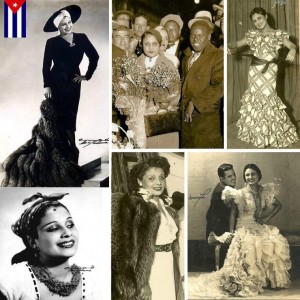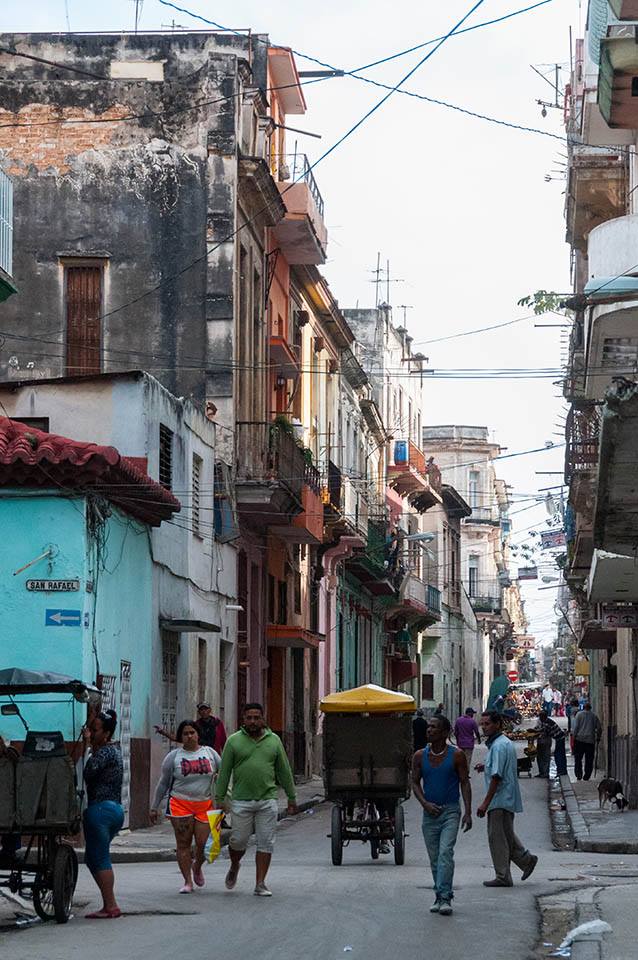In 1933 started his accompanist, Bola de Nieve (Ignacio Villa), as soloist.
Rita Montaner and Facenda Fulceda Aurelia, also known as The One, was one of the greatest Cuban artists dabbled in theater, radio, film and television reaching significant national and international success. Daughter of a white and mulatto grew up in a mixed European culture and African environment. He began studying piano at the Conservatory “Peyrellade”, which won the Gold Medal with only 13 years old. He graduated in piano, singing and harmony in 1917. Upon graduation he devoted himself to singing although many told him he had a good future in the piano.
She was the first female voice of the Cuban radio. He shared the stage with renowned figures of Cuban and international stage. Some of the best composers of the time wrote scores especially for her as is the case with Gonzalo Roig “Cecilia Valdés”, Moisés Simons with “The Peanut Vendor” Eliseo Grenet with “Ay Mama Ines” Ernesto Lecuona with “The cafetal” Gilberto S. Valdes “Ogguere” among others. His art collected many of the places in the world like the US and Europe.
In 1918, California is located in the Catalan musician Xavier Cugat, with whom he married that same year. Although her husband did not want to continue in showbiz, Rita insisted in his vocation. The marriage did not last long.
In 1923 he appeared at the “National Theatre” in the “Teatro Luisa” of Cienfuegos and the “Home of Comedy”, Havana, in a concert of sacred music. She sang the soprano Lola de la Torre duo “La Gioconda” by Ponchielli, the “Falcon” room. The next day, Alejo Carpentier reseñaba in the press his performance, and drew attention to the tone of exquisite voice of Montaner and safety by targeting the high notes.
In 1926, while in the United States, agreed to a contract with the company “Follies Schubert” with which he toured much of the states of the Union. In the “Apollo Theatre” in New York did a stint with Xavier Cugat’s orchestra. After six months of activity returned to Cuba.
Between 1928 and 1929 made dozens of recordings for Columbia signature. She presented with great success in the “Palace Theatre” in Paris with a group of Cuban artists among them Sindo Garay, who made duet with his son Guarionex- showing he did exclaim Carpentier Rita Montaner had created a style screaming, to open voice, arrabaleras songs they knew yard solar, batey wit, since Chinese, Chinese party and awarded lollipop.
He travels to Paris to perform at the “Olympia Theatre” in 1928 and later was hired to replace actress Raquel Meller in the “Palace”. Also participating in the spectacle of the star Josephine Baker. After a brief stay in Cuba travels to America to sing in “Wonder Bar” of M. Jolson. In 1931 season ago counterpart of Al Jolson in his show. He toured with the musical “Wonder Bar” by Detroit, Washington, Boston, Baltimore, Philadelphia, Cleveland and Chicago.
He performed in Mexico in 1933 and was when he launched his accompanist, Bola de Nieve (Ignacio Villa), as soloist. The following year he appeared again in the US and Buenos Aires.
In 1935 stars in a show created by Gilberto Valdés in the Main Theater of Comedy. In the same plays songs like “African blood”, “Bembe”, “Tambó” and “Oggere”. Sing in the cabaret “Mulgoba” with artist Snowball, and later in Tropicana which is maintained for 9 years. That same year he was chosen as the Queen of the Radio.
For those years Montaner represented the leading role of the finest works of Cuban zarzuela: “Cecilia Valdés”, “Rosa China” and “El Cafetal”. And participate in the Cuban movie “It Happened in Havana” (1938), “The romance of the palmar” (1938), “Maria la O” in 1949 and “The One” in 1954, Ramón García Pawn.
He sang on Radio Caracas, Venezuela, and back to Havana, played the lead role of Rodrigo Prats lyrical farce “Amalia Batista” (1940). Later that year was the central figure in New York, the Broadway show “Havana-Madrid”. Its further development was as opera singer with great skills and interpretive versatility ranging from “Mama Ines” released by her in the operetta “Niña Rita” in 1927, to the “Medium” and “Phone”, the Italian Gian Carlo Menotti, performed by her in 1955.
Scored another hit in 1956 with “My dear Charles,” with the Argentine actor Adrian Cuneo and the following year with “Spring Fever” by Noël Coward. While conducting one of the representations, warned that remained voiceless in the first act, but was imposed on that difficulty and managed to finish it. This was his last performance.
He died on April 17, 1958. You will be taxed a great tribute CMQ TV and televised by Channel 4, while twenty radio chain. They attended dozens of the best Cuban artists by asking for its improvement. His funeral was crowded.
The figure in this great big star of Cuba, Rita Montaner, accompany, from this month at Ernest Hemingway and Snowball the only Cuba Wax Museum, located in Bayamo.
MemoriasDeCuba / Derubín Jacomé / InternetPhotos / TheCubanHistory.com
The Cuban History, Hollywood.
Arnoldo Varona, Editor.
RITA MONTANER, “La Única”.
En 1933 lanza a su pianista acompañante, Bola de Nieve (Ignacio Villa), como solista.
Rita Aurelia Fulceda Montaner y Facenda, también conocida como La Única, fue una de las más grandes artistas cubanas, incursionó en el teatro, la radio, el cine y la televisión alcanzando notable éxito nacional e internacional. Hija de un blanco y una mulata creció en un ambiente mezclado por la cultura europea y la africana. Comenzó sus estudios de piano en el Conservatorio “Peyrellade”, en el cual obtuvo la Medalla de Oro con solo 13 años de edad. Se graduó de piano, canto y armonía en 1917. Al graduarse se dedicó al canto aunque muchos le decían que tenía un buen futuro en el piano.
Fue la primera voz femenina de la radio cubana. Compartió escenario con prestigiosas figuras del escenario cubano e internacional. Algunos de los mejores compositores de la época escribían partituras especialmente para ella como es el caso de Gonzalo Roig con “Cecilia Valdés”, Moisés Simons con “El manisero”, Eliseo Grenet con “Ay Mamá Inés”, Ernesto Lecuona con “El cafetal”, Gilberto S. Valdés con “Ogguere “,entre otros. Su arte recogió muchas de las plazas del mundo como Estados Unidos y Europa.
En 1918, se encuentra en California con el músico catalán Xavier Cugat, con el que contrae matrimonio ese mismo año. Aunque su esposo no deseaba que continuara dentro del mundo del espectáculo, Rita insistió en su vocación. El matrimonio no duró mucho.
En 1923 se presenta en el “Teatro Nacional“, en el “Teatro Luisa” de Cienfuegos y en el “Principal de la Comedia”, de La Habana, en un concierto de música sacra. Cantó con la soprano Lola de la Torre el dúo de “La Gioconda” de Ponchielli, en la sala “Falcón”. Al día siguiente, Alejo Carpentier reseñaba en la prensa su actuación, y llamaba la atención sobre el timbre de voz exquisito de la Montaner y su seguridad al atacar las notas altas.
En 1926, estando en los Estados Unidos, aceptó un contrato con la compañía “Follies Schubert” con la que recorrió gran parte de los estados de la Unión. En el “Teatro Apolo” de Nueva York hizo una temporada con la orquesta de Xavier Cugat. Tras seis meses de actuación regresó a Cuba.
Entre 1928 y 1929 hizo decenas de grabaciones para la firma Columbia. Se presentó con todo éxito en el “Teatro Palace” de París con un grupo de artistas cubanos –entre ellos Sindo Garay, quien hizo dúo con su hijo Guarionex–, actuación que hizo exclamar a Carpentier que Rita Montaner se había creado un estilo en el que gritaba, a voz abierta, canciones arrabaleras que sabían a patio de solar, batey de ingenio, puesto de chinos, fiesta de chinos y pirulí premiado.
Viaja a París para presentarse en el “Teatro Olimpia” en 1928 y posteriormente es contratada para sustituir a la actriz Raquel Meller en el “Palace”. Además participa en el espectáculo de la vedette Josephine Baker. Después de una breve estancia en Cuba viaja para Estados Unidos para cantar en “Wonder Bar” de M. Jolson. En 1931 hace temporada como contrafigura de Al Jolson, en su show. Giró con la obra musical “Wonder Bar” por Detroit, Washington, Boston, Baltimore, Filadelfia, Cleveland y Chicago.
Actuó en México en 1933 y fue cuando lanzó a su pianista acompañante, Bola de Nieve (Ignacio Villa), como solista. Al año siguiente actuó de nuevo en Estados Unidos y Buenos Aires.
En el año 1935 protagoniza un espectáculo creado por Gilberto Valdés en el Teatro Principal de la Comedia. En el mismo interpreta temas como “Sangre Africana”, “Bembe”, “Tambó” y “Oggere”. Canta en el cabaret “Mulgoba” con el artista Bola de Nieve, y posteriormente en Tropicana donde se mantiene por 9 años. Ese mismo año es escogida como la Reina de la Radio.
Por esos años la Montaner representó el papel protagónico de las mejores obras de la zarzuelística cubana:” Cecilia Valdés” , “Rosa la china” y “El Cafetal”. Y participa en las películas cubanas “Sucedió en La Habana” (1938),“El romance del palmar” (1938), “María la O” en 1949, y “La Única” en 1954, de Ramón Peón García.
Cantó en Radio Caracas, Venezuela, y, de vuelta a La Habana, interpretó el rol protagónico del sainete lírico de Rodrigo Prats “Amalia Batista” (1940). A fines de ese año fue la figura central, en Nueva York, del espectáculo de Broadway “Havana-Madrid”. Su mayor desarrollo fue como cantante de arte lírico con grandes habilidades y versatilidad interpretativa que iban desde “Mamá Inés”, estrenada por ella en la zarzuela “Niña Rita”, en 1927, hasta La” Medium” y “El teléfono”, del italiano Gian Carlo Menotti, interpretadas por ella en 1955.
Obtuvo otro gran éxito en 1956 con “Mi querido Charles”, con el actor argentino Adrián Cúneo y, al año siguiente, con “Fiebre de Primavera”, de Noël Coward. Mientras realizaba una de las representaciones, advirtió que se quedaba sin voz en el primer acto, pero se impuso sobre esa dificultad y logró terminarla. Esta fue su última actuación.
Falleció el 17 de abril de 1958. Se le tributó un gran homenaje televisado por CMQ TV y el Canal 4, además de veinte radioemisoras en cadena. Participaron decenas de los mejores artistas cubanos haciendo votos por su mejoría. Su sepelio fue multitudinario.
La figura de esta gran gran vedette de Cuba, Rita Montaner, acompañará, desde este mes, a las de Ernest Hemingway y Bola de Nieve en el único Museo de Cera de Cuba, ubicado en Bayamo.
MemoriasDeCuba/Derubin Jacomé/InternetPhotos/TheCubanHistory.com
The Cuban History, Hollywood.
Arnoldo Varona, Editor.





